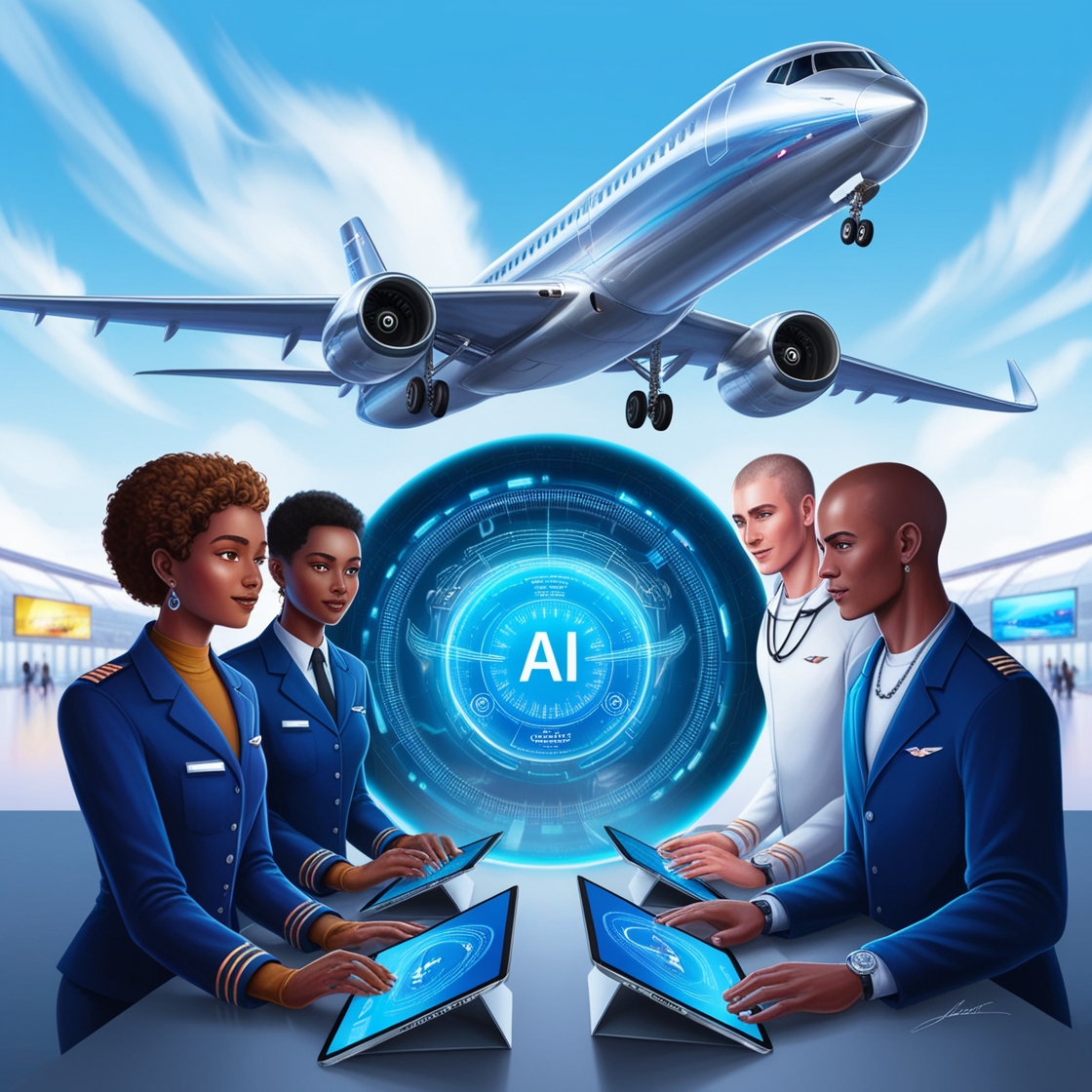Introduction
Artificial Intelligence (AI) is revolutionizing industries worldwide, and modern jet aviation is no exception. From designing cutting-edge aircraft to enhancing passenger experiences and ensuring safety, AI is driving advancements at an unprecedented pace. But what exactly is AI doing in the aviation industry, and how is it shaping the future of flight? Let’s explore.
Understanding Artificial Intelligence in Aviation
What is Artificial Intelligence?
Artificial Intelligence refers to computer systems capable of performing tasks that typically require human intelligence, such as decision-making, problem-solving, and learning. In aviation, these capabilities are applied to optimize operations, improve safety, and innovate new technologies.
AI’s Role in Technology Evolution
AI’s integration into aviation began with simple automation, but it has since evolved into complex systems capable of managing autonomous flights and predicting mechanical failures before they occur. The journey from basic flight algorithms to today’s advanced applications highlights AI’s transformative impact on the industry.
AI in Aircraft Design and Manufacturing
Optimizing Aerodynamics with AI
Designing a jet that balances speed, fuel efficiency, and safety is no small feat. AI helps engineers simulate and analyze countless aerodynamic designs, identifying the most efficient models faster than traditional methods.
Smart Manufacturing Processes
AI is a game-changer in jet manufacturing. It powers robotic assembly lines, ensuring precision and reducing human error. Moreover, AI-driven 3D modeling and simulations allow manufacturers to visualize and test components virtually before production, saving time and resources.
AI in Flight Operations
Autonomous Flight Systems
Self-piloted aircraft are no longer science fiction. AI enables planes to operate autonomously, managing takeoffs, cruising, and landings with minimal human intervention. This technology could redefine the roles of pilots in the future.
Predictive Maintenance
Imagine identifying potential issues before they become critical. AI does just that by analyzing real-time data from jet sensors to detect anomalies. This predictive capability ensures timely maintenance, reducing delays and enhancing safety.
Air Traffic Management
With increasing air traffic, managing it efficiently is crucial. AI helps air traffic controllers by predicting flight paths, optimizing routes, and minimizing congestion, leading to safer and more efficient skies.
AI in Passenger Experience
Personalized Services
AI analyzes passenger preferences to offer tailored services, from recommending movies to customizing meals. This personalization transforms flying from a routine experience to a memorable journey.
Enhanced Safety and Comfort
AI-powered systems monitor cabin conditions in real-time, adjusting lighting, temperature, and even air pressure to ensure maximum comfort for passengers.
AI and Aviation Safety
Enhancing Flight Safety
AI reduces human error, a leading cause of aviation accidents. From analyzing weather patterns to detecting mechanical issues mid-flight, AI ensures safer journeys.
Pilot Training Simulations
AI-based simulators offer pilots immersive training experiences. These simulations mimic real-world scenarios, enabling pilots to practice responses to emergencies without real-world risks.
Challenges and Ethical Considerations
Limitations of AI
While AI is powerful, it’s not infallible. High computational demands and occasional inaccuracies pose challenges. Balancing reliance on AI with human oversight remains crucial.
Ethical Dilemmas in Autonomous Systems
Should AI or humans make life-and-death decisions? This question becomes increasingly relevant as autonomous systems gain control. Striking a balance between human input and AI autonomy is a pressing ethical challenge.
Future Prospects of AI in Aviation
Emerging Trends
From supersonic jets to urban air taxis, AI is at the heart of aviation innovation. It’s enabling faster, greener, and more connected modes of transportation.
Integration with Other Technologies
AI doesn’t work alone—it thrives in synergy with technologies like the Internet of Things (IoT) and blockchain, creating smarter, more secure aviation ecosystems.
Conclusion
Artificial Intelligence is not just transforming modern jet aviation; it’s redefining its possibilities. By optimizing operations, enhancing safety, and creating unparalleled passenger experiences, AI paves the way for a smarter, safer, and more efficient future. While challenges remain, the aviation industry’s commitment to innovation ensures AI will continue to soar to new heights.
FAQs
- How is AI revolutionizing aviation?
AI automates operations, enhances safety, and enables innovations like autonomous flights. - What are the safety benefits of AI in jet aviation?
AI reduces human errors, predicts maintenance needs, and monitors real-time flight data for anomalies. - Can AI replace human pilots in the future?
While AI can perform many tasks, full replacement of human pilots is unlikely soon due to ethical and trust considerations. - How does AI enhance passenger experience in aviation?
By personalizing services and optimizing cabin conditions for comfort and safety. - What challenges does the aviation industry face in adopting AI?
Challenges include high costs, computational limitations, and ethical concerns about autonomy.
